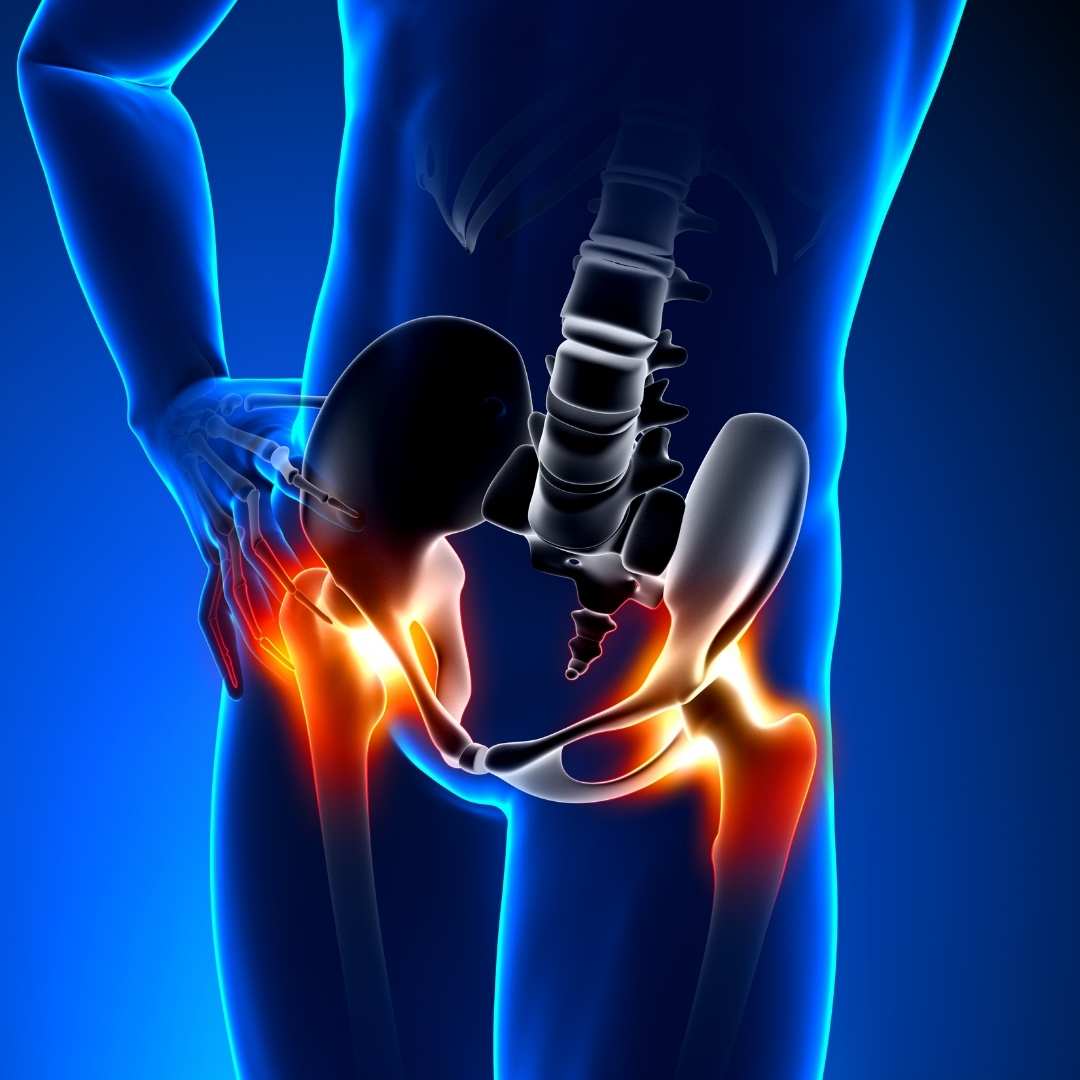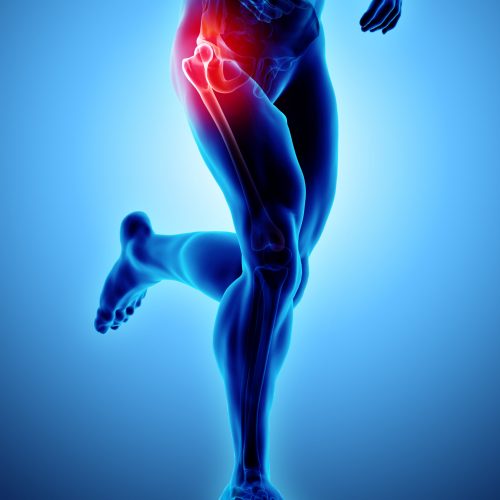Your Hip Arthroscopy Specialist In London
WHAT IS HIP ARTHROSCOPY?
Hip arthroscopy is a minimally invasive, cutting-edge surgical procedure involving a tiny camera’s insertion into the hip joint, enabling precise visualization and diagnosis of various hip joint issues. Additionally, specialized instruments can be introduced through small incisions to effectively address a wide range of hip joint problems, providing targeted treatment and enhanced recovery.
Discover state-of-the-art hip arthroscopy options in London for diagnostic and surgical interventions, including keyhole surgery for hip labral tears. With 3.2 million of people in the UK suffering from hip pain (Osteoarthritis), our team of experts specializes in advanced hip arthroscopy procedures.

CONDITIONS WHEN HIP ARTHROSCOPY MAY BE PERFORMED?
Hip arthroscopy is used to treat a number of conditions in and around the hip joint including:
FEMOROACETABULAR IMPINGEMENT (FAI)
The most common reason hip arthroscopy is performed is to address the cause of hip impingement and repair or remove the damaged tissue that this has led to. This can include removing excess bone and repairing the labrum.
LABRAL TEARS
Labral tears are common and do not necessarily causes people a problem. It is important to understand why the labrum has torn and address the cause. Labral tears can be repaired or removed if the tissue can not be stitched.
ARTICULAR CARTILAGE DAMAGE
If the lining of the joint is damaged due to injury or impingement a procedure called microfracture can be performed to help create a patch of scar tissue to cover the damaged area.
LIGAMENTUM TERES (LT) TEARS
Ligamentum Teres tears can occur in patients with FAI, but can also occur due to trauma and hyper mobility. This is a difficult condition to diagnose as Ligamentum Teres tears are not necessarily apparent on MRI scans.
CAPSULE PLICATION (TIGHTENING)
This is a procedure that can be performed in patients with excessive rotation in the hips. This is usually performed in patients with Ligamentum Teres tears and associated hypermobility to help reduce the risk of suffering another LT tear.
LOOSE BODIES
Sometimes loose bits of bone or calcified soft tissue can form in the hip joint which can be removed.

HOW DO I KNOW IF HIP ARTHROSCOPY IS RIGHT FOR ME?
The utmost priority lies in obtaining the most precise diagnosis achievable. A comprehensive comprehension of your hip symptoms, meticulous findings during physical examination, and a meticulous understanding of X-rays and scans are vital. Once a diagnosis is established, if there has been no improvement with physiotherapy, the option of arthroscopy can be considered. It is crucial to engage in a discussion and develop a thorough understanding of the risks involved and the expectations regarding the recovery process.
NON-SURGICAL TREATMENT:
A targeted rehabilitation programme supervised by a seasoned therapist holds the potential to alleviate symptoms effectively. In the initial stage, it is imperative for all patients to actively engage in a comprehensive rehabilitation programme. Injections can be employed as a short-term measure to alleviate symptoms. Certain patients can utilize this temporary relief to engage in rehabilitation efforts and effectively manage their symptoms once the effects of the injection have subsided.
What You Want To Know About Our Hip Arthroscopy Surgery
CONSENT:
It is important that you understand the potential risks of surgery as well as the benefits. You will have the opportunity to go through these with Mr Webb. Prior to the procedure, an electronic consent form will be sent to you that goes through the risks in detail. Please do not hesitate to arrange an appointment to discuss any questions you have.
PREHABILITATION:
Mr Webb advises that you start a physiotherapy programme prior to surgery.
The aims of prehabilitation are:
- Muscle strength and hip control
- Practice using crutches
You will be asked to come to hospital where one of the nursing staff will prepare you for the procedure. The anaesthetist will meet you to discuss the type of anaesthetic and pain relief plan for after. Mr Webb will confirm the details of the procedure with you, answer any last-minute questions and draw an arrow on your leg. The procedure normally takes 1 to 2 hours. Once you have recovered from the anaesthetic, you will get up with your crutches and practice walking. The vast majority of patients go home a few hours after their operation.
You will be given a set of crutches. You should use these until you can walk normally and without a limp. Most people will no longer need crutches after the first two weeks. You must avoid any activities that involve impact, such as running and jumping. This is to reduce the risk of fracture while the bone is healing.
You are likely to require crutches for approximately two weeks. You can come off the crutches once you can walk without a limp.
It is important to discuss the risks to ensure that you can assess whether surgery is right for you. The specific risks for hip arthroscopy include:
- INFECTION: The risk of infection is less than 1 in 1000 cases. A single dose of antibiotic is given during the anesthetic.
- BLOOD CLOTS: The risk of developing a blood clot is approximately 1 in 1000. Clots in the leg (Deep Vein Thrombosis/DVT) can travel to the lung (Pulmonary Embolus/PE).
- PAIN: People can experience pain following surgery. This is mainly dictated by the degree of damage within the hip.
- STIFFNESS: It is important to follow a rehabilitation programme.
- FRACTURE: When bone is removed this creates a theoretical weakness to reduce the stiffness.
- NERVE INJURY: 1 in 100 people have an injury to either the nerve that supplies the foot and ankle or the inner thigh. The vast majority of these resolve within the first 24 hours following surgery.
Mr Webb will review you after surgery. It is common not to remember the details of this due to the anaesthetic, but the details of the procedure will be discussed at follow-up and can be sent to your physiotherapist if requested by yourself. It is normal to have pain and swelling following a hip arthroscopy. This varies from patient to patient and can be localized to the hip, but can affect the whole thigh and knee.
There are cold therapy machines available to help reduce the swelling. It is a good idea to see your physiotherapist within the first week following your operation. As mentioned above, one of the risks of the procedure is nerve injury. It is normal to have some numbness and this usually improves within the first couple of weeks. At approximately two weeks, you will be seen by Mr Webb to review the incisions and go through the details of what was found and performed.
The sticky dressings should remain on until the two week review, even if bloodstained. It is common that the dressings can soak as the fluid used during the procedure leaks. This sometimes means the dressings come off. If they do, they can replaced by any simple waterproof dressing. If the waterproof dressings are intact you can shower, but do not soak the dressings and be careful not to slip or put too much weight through the operated leg. After your two week review, you can have a bath, swim and start hydrotherapy.
This is a very important part of recovery. Each patient is different and requires individualised rehabilitation. Mr Webb is happy to discuss your hip and operation with your therapist if you give permission. As a baseline guide, he recommends following the Takla-O’Donnell Protocol developed at Hip Arthroscopy Australia.
Mr Mark Webb's Hip Arthroscopy Unveils the Path to Relief
Everybody has their set of challenges on their plate; a few can be avoided, and some you need extra help to tackle.
If you experience debilitating hip pain during activities like bending or climbing, it may be time to consult a hip arthroscopy surgeon. Hip arthroscopy is a minimally invasive procedure offering targeted treatment for various hip joint conditions. With extensive experience, Mr Mark Webb prioritizes transparent and informed decision-making, ensuring the finest outcome for your unique situation.
Say goodbye to restricted movements and embrace improved hip joint function through this advanced surgical approach. Let Mr Webb guide you towards a pain-free and active lifestyle!
Watch the Procedure
